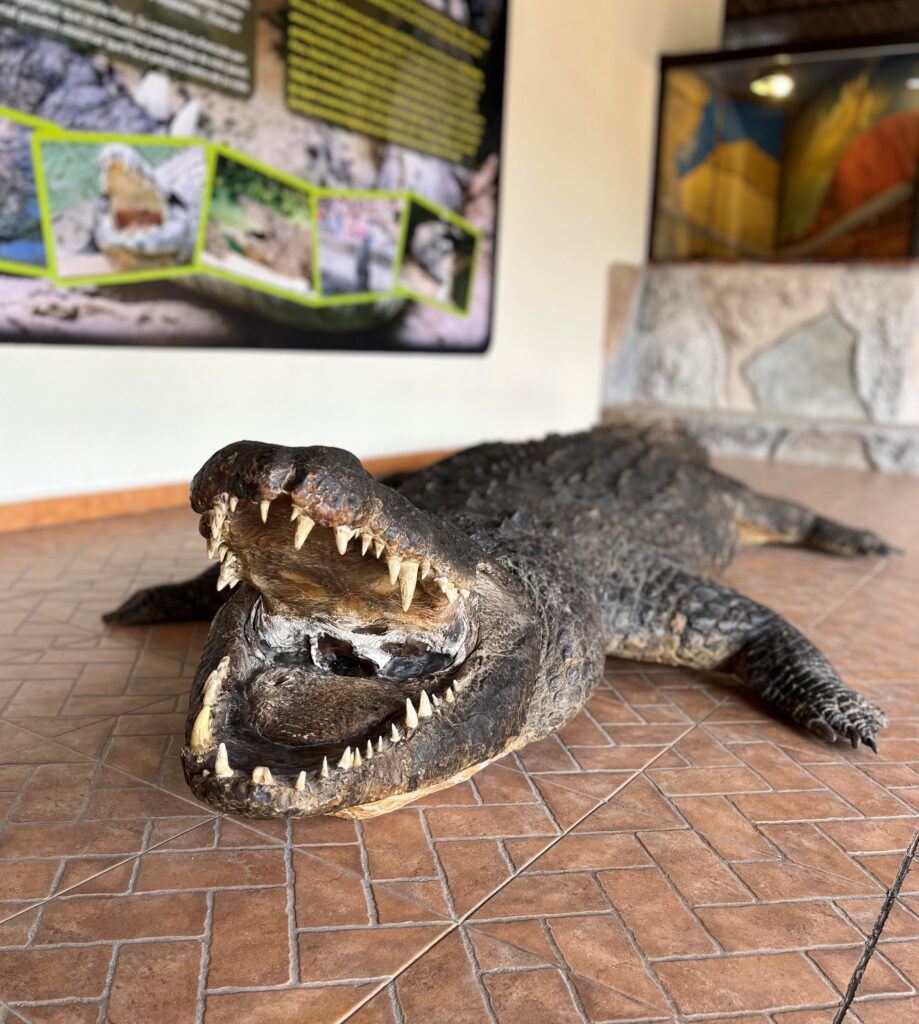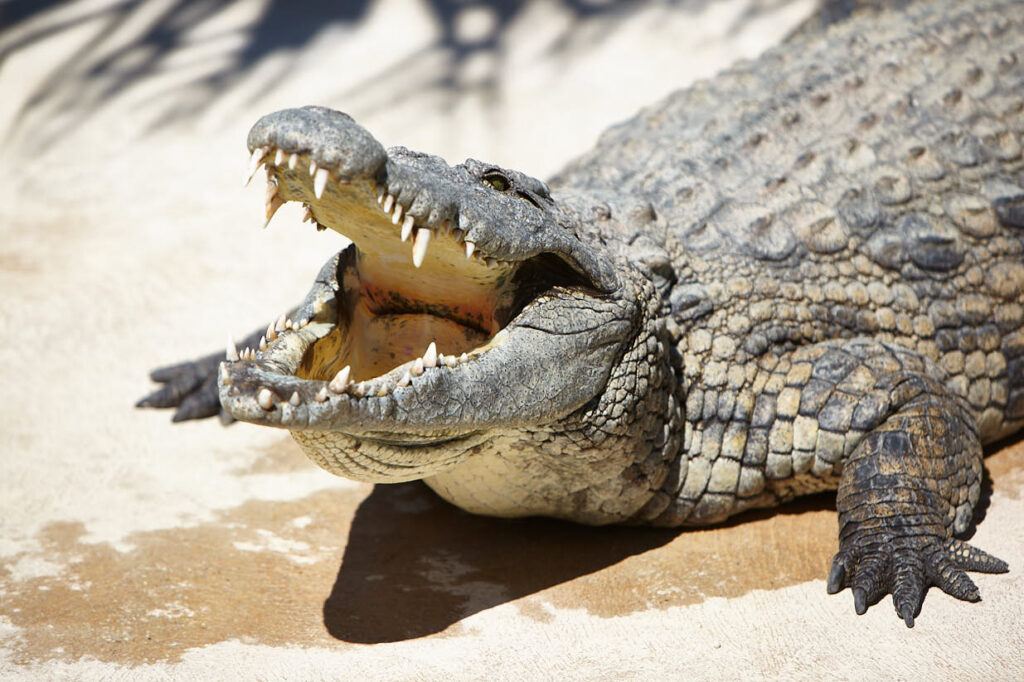
NILE CROCODILE
Crocodylus niloticus
It is the most widespread crocodile on the African continent.
Juveniles are dark green and brown, with black transverse stripes on the tail and trunk. Adults are uniformly dark with a light-coloured abdomen.
Each female lays between 50 and 80 eggs, and is a species of crocodile in which the adults practice parental care with their offspring.
Did you know?
The sex of crocodiles is determined by the temperature during incubation. Above 30°C, the offspring is most likely to be male, and below 30°C, it will be female.
The Nile crocodile can make up to 26 different types of sounds.
SPECTACLED CAIMAN
Caiman crocodylus
The spectacled caiman is a species of crocodile considered to be of medium size.
Males, which are larger than females, are typically up to 2.5m.
Juveniles are yellow with black spots and bands on the body and tail. As they mature, they lose their yellow colour and the markings become less and less distinct.
Adults are dull olive-green, with scattered dark spots on the back and bands on the tail.
Did you know?
The species name comes from a bony ridge between the eyes that gives the appearance of wearing a pair of spectacles.
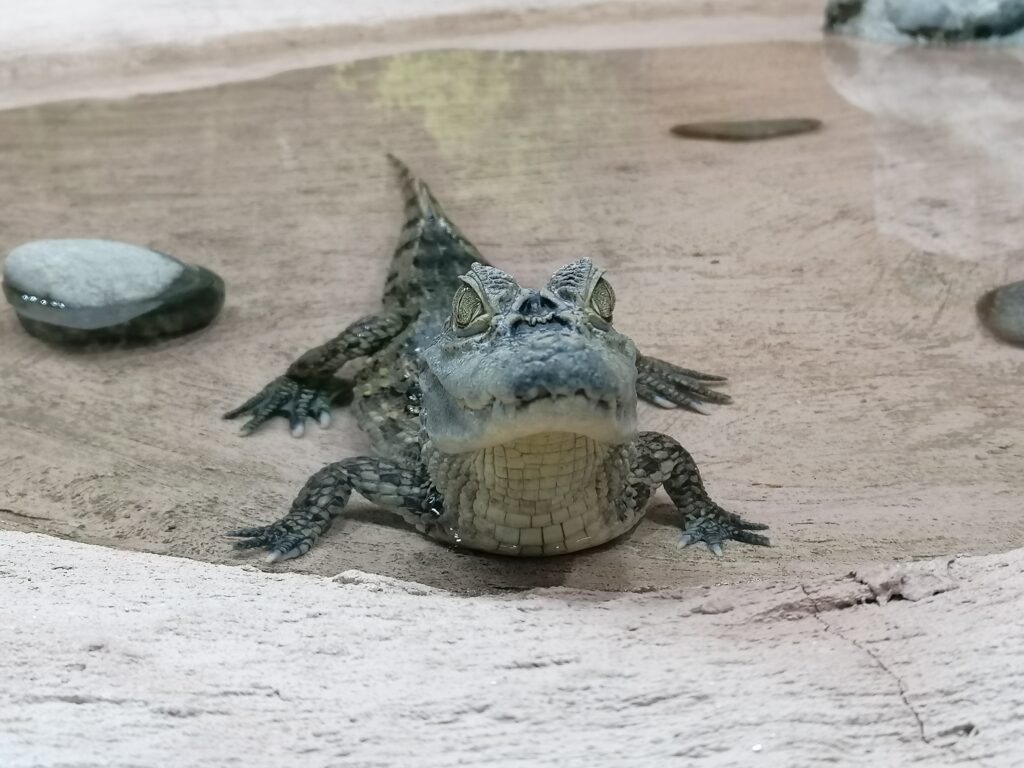
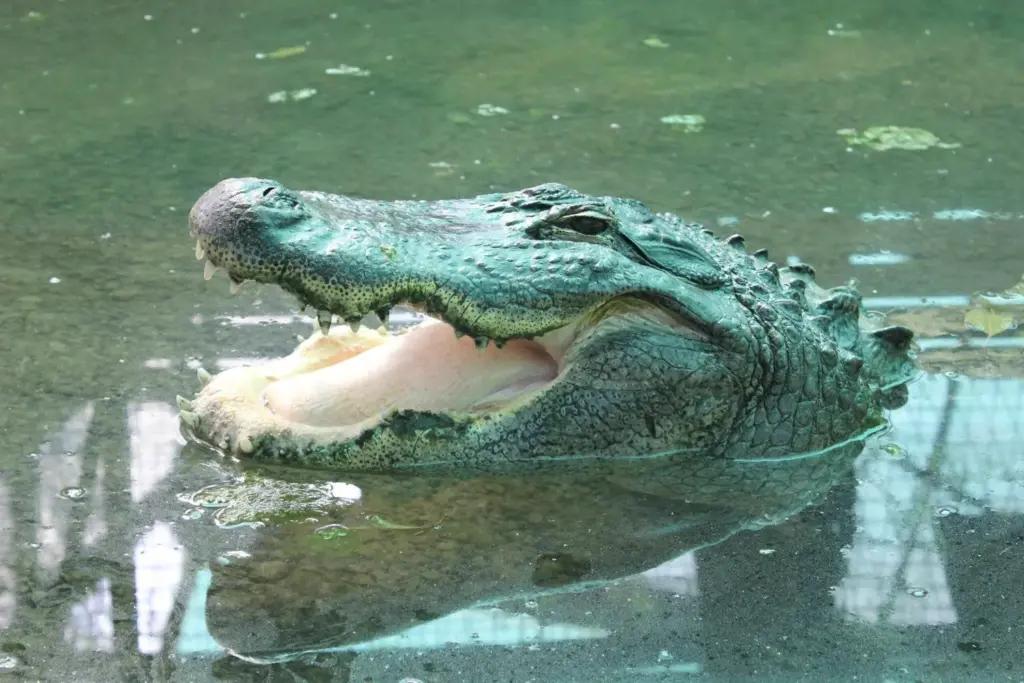
AMERICAN ALLIGATOR
Alligator mississippiensis
Alligators are characterised by the fact that the fourth mandibular tooth fits inside the jaw, unlike other crocodilians, and is not visible when the mouth is closed.
The muzzle is broad and flattened, almost smooth at the top where the eyes and nostrils are located. The tail is laterally compressed.
The limbs are short and stout, with interdigital membranes and sharp nails on the hands and feet.
In terms of colouring, the upper area is dark green or blackish and the ventral area is yellow.
Did you know?
Alligators are not found in salt water because they lack the glands that remove salt from the body.
BEARDED DRAGON
Pogona vitticeps
The bearded dragon is a saurian native to the desert areas of Australia.
It is a diurnal animal. Its triangular-shaped head has thorny scales on the underside which, when bristling, resemble a beard, hence its name.
They can slightly change their colour to regulate the body temperature and also to express their mood.
Did you know?
Males show their dominance by moving the head up and down rapidly, often with a bristling beard.
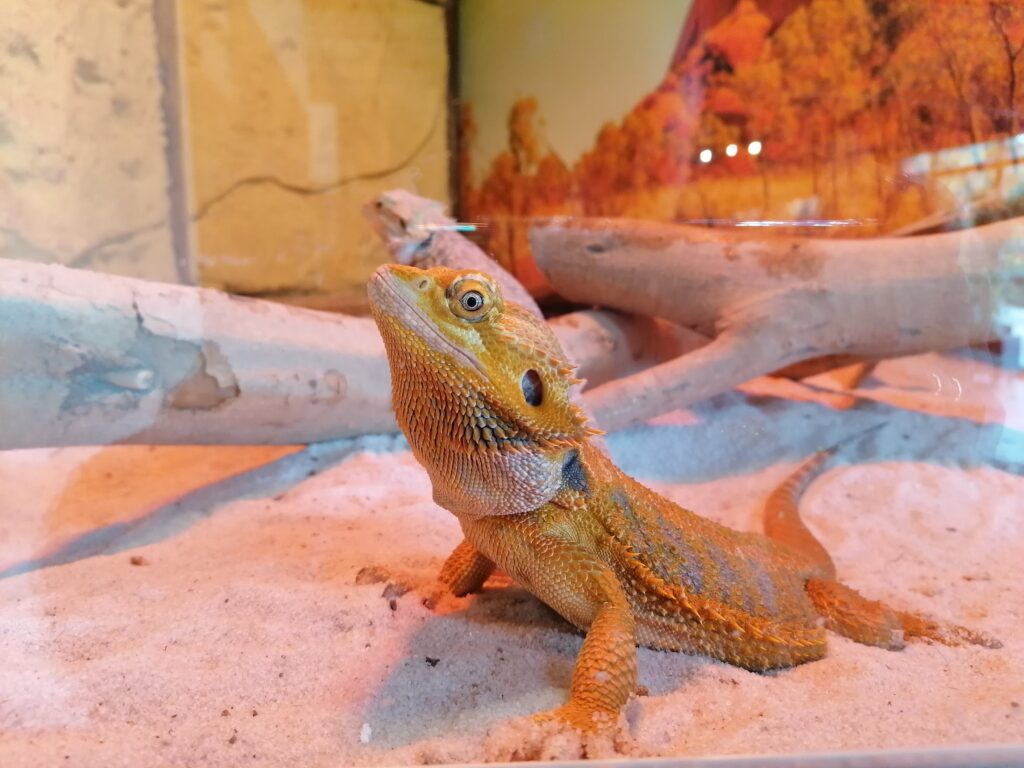
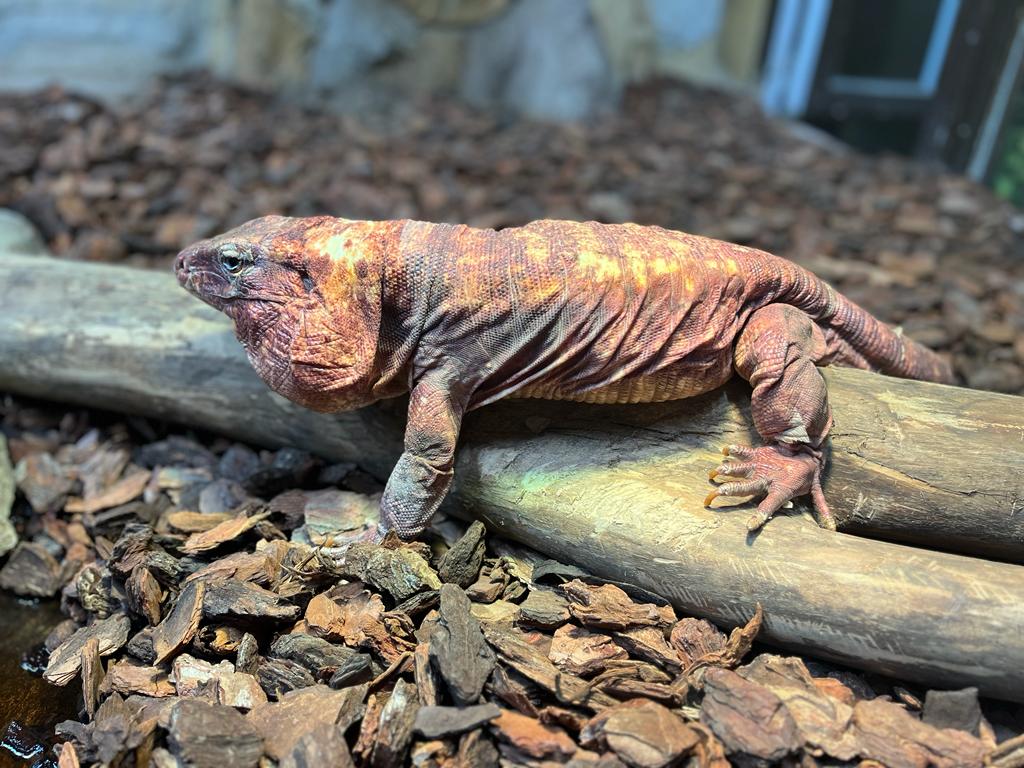
RED TEGU
Tupinambis rufescens
It is a large lizard with a rather robust head and short limbs. In general, the tail is longer than the body.
The dorsal area is reddish in colour with different shades. It has dark transverse bands and irregular spots spaced and crossed laterally by a line of somewhat blurred white spots from the ear to the hind limbs.
Whitish spots can be seen on the limbs and towards the belly a reddish, almost orangey colour.
Did you know?
It is a shy and not very aggressive animal, which flees at the slightest sign of danger, but if it feels cornered, it opens its mouth and emits an intimidating whistle.
It is one of the fastest lizards. They can run at speeds of 32km/h.
SPUR-THIGHED TORTOISE
Testudo graeca
The carapace of the spur-thighed tortoise is convex in shape, with yellowish and olive green tones, sometimes darker to black. It is made up of plates bordered in black and sometimes also has a black central point.
A particular feature of this turtle is that they have a supracaudal plate on the dorsal part of the carapace, unlike other species, which is not divided.
Did you know?
As a collaborating entity of the Department of the Environment, we guarantee the life of these specimens and bring the public closer to knowledge of this species.
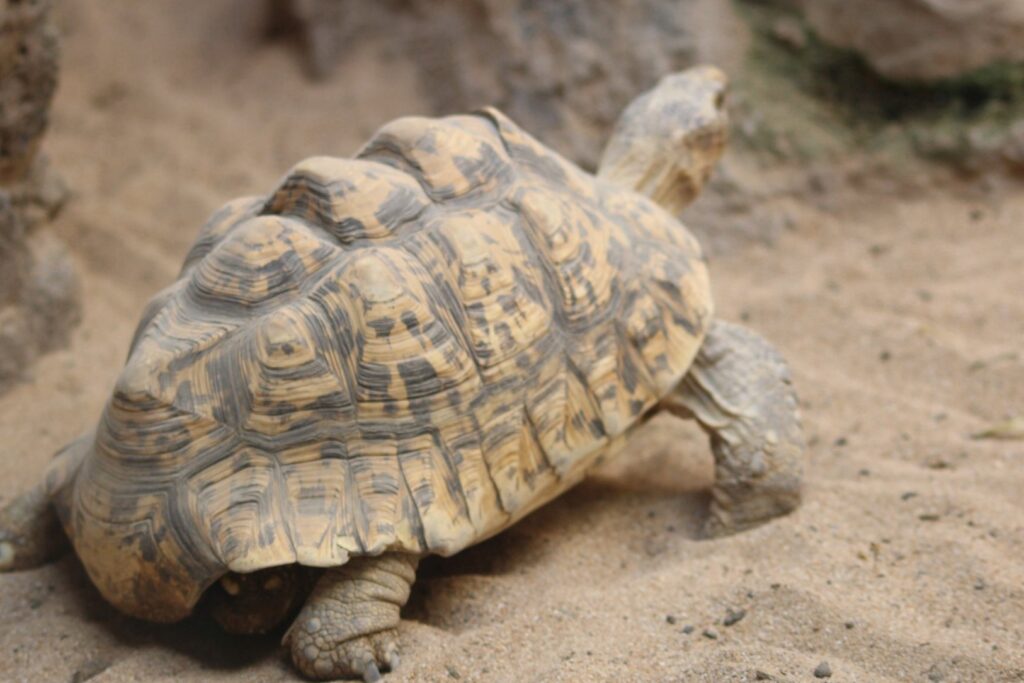
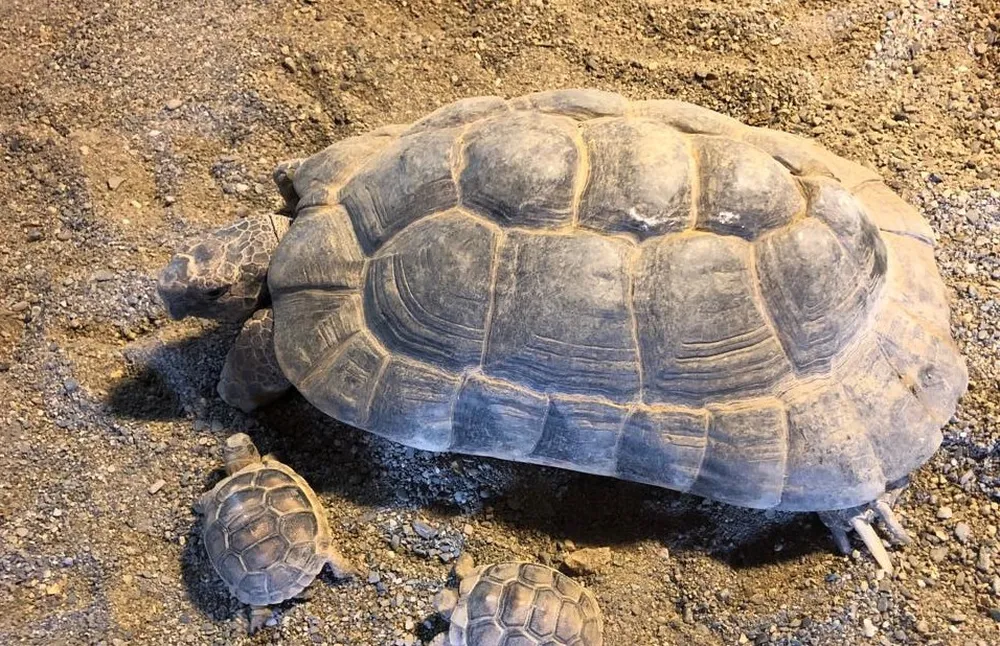
MARGINATED TORTOISE
Testudo marginata
The marginated tortoise is the largest of the testudo genus, reaching up to 35cm, although the average is 25-30cm for males and 24-38cm for females. Females weigh more than males because they are narrower.
The distinctive character of the species is present on the plastron: 3-5 pairs of black triangles with the apex pointing towards the tail. Another unique character of the species is the presence of a characteristic flap formed by the posterior marginal plates.
Did you know?
Their defence behaviour is passive: hiding legs and head inside the shell. If this does not persuade the predator, the moment it tries to bite it, it may urinate and defecate profusely to make the predator release it.
AFRICAN SPURRED TORTOISE
Geochelone sulcata
It is one of the largest tortoises in Africa. The carapace is lightly engraved with concentric squares and has a uniform ochre-brown colour, which may become lighter. Only the intercostal junctions become black.
The plastron is the same colour as the carapace and unspotted. The head is elongated and small compared to the size of the carapace, and is provided with a hooked horny beak.
The head, limbs and tail are of the same earthy colour, which gives the animal a perfect adaptation to camouflage itself in the environments where it lives.
Did you know?
They grow rapidly. They double in size every three years and are the third largest turtle in the world.
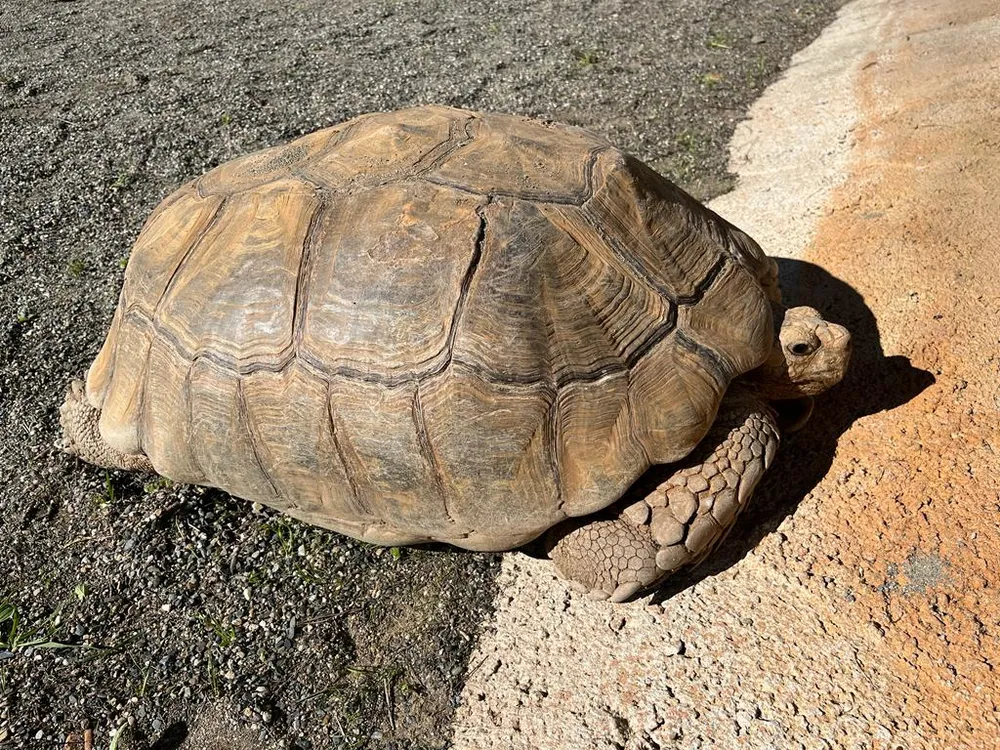
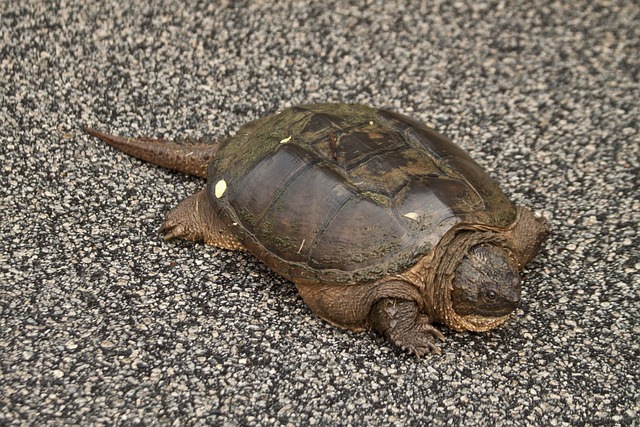
SNAPPING TORTOISE
Chelydra serpentina
Their carapace typically ranges in length from 20cm to 47cm and in colour from dark brown to black in some individuals.
The tail is almost as long as its shell and has saw-tooth keels. It has tubercles on its neck and legs. The neck, legs and tail are yellowish in colour while the head is dark.
Did you know?
Their powerful jaws can cause serious injuries, although they are animals that prefer to avoid confrontation. They can swim up to 35km/h.
AFRICAN HELMETED TORTOISE
Pelomedusa subrufa
It has a fairly flat carapace. It is usually dark grey to brown in colour and is not patterned. The plastron may be light with diffuse dark patches or all dark.
The head and legs are dark olive, and the underside of the neck is a much lighter colour.
The top of the head is usually spotted and they have very stout, rather webbed feet.
Did you know?
These turtles cannot retract their heads like other species and instead lay their heads on their sides so that they are protected under their shells. They have strong defensive scent secretions that can be recognised from long distances.
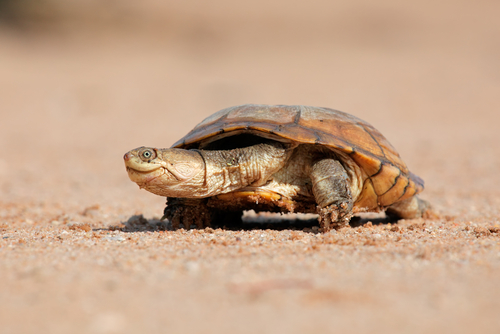
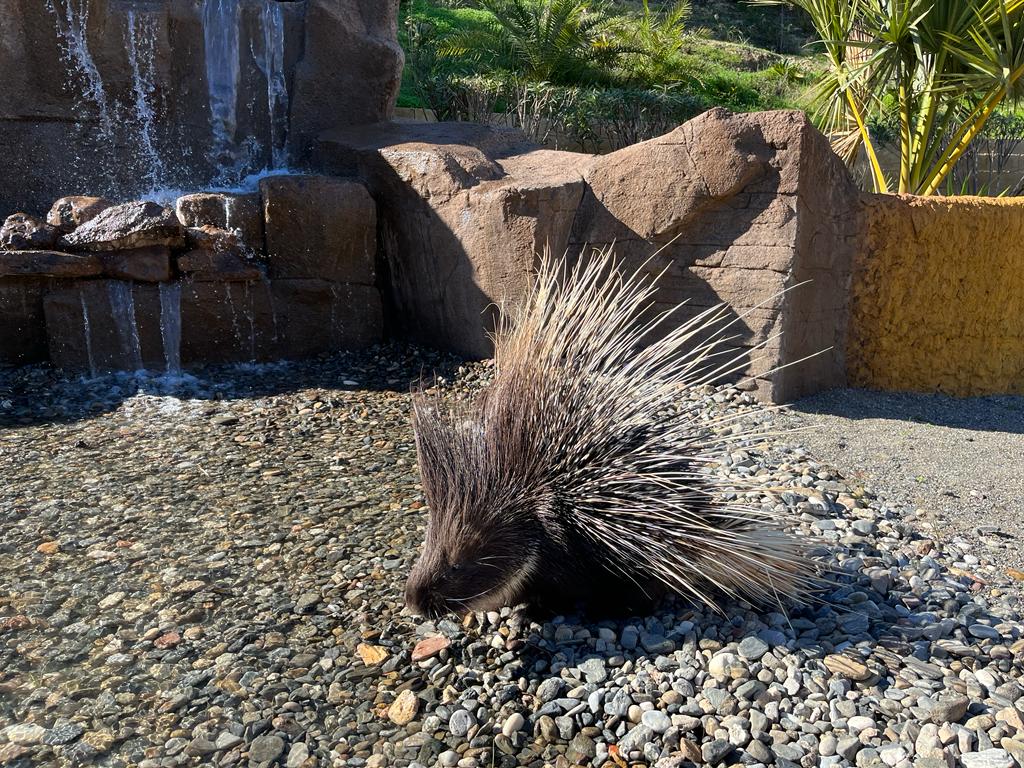
CRESTED PORCUPINE
Hystrix cristata
They are the most conspicuous rodents due to their spiny coat. There can be very diverse types of hairs and spines, ranging from soft woolly hairs to long, stiff, swaying quills, often ringed in black and white, to long, flattened bristles, to thick but very elastic bristles.
The backward pointing spines on the rump are particularly thick and long. Some spines can reach 7mm in diameter and 40cm in length.
Did you know?
They are one of the largest rodents in the world. Their teeth grow very quickly.
When they are born, their barbs are just soft hairs that harden after a few weeks.
Paco, the largest crocodile of Europe
On March 5th 1999, Crocodile Park welcomed the arrival of a Nile crocodile that came all the way from one of the largest crocodile farms in South Africa.
He was named Paco, and he ended up measuring 5 meters long and weighting 600 kilograms.
His extraordinary size merited him the title of largest crocodile in Europe, which he held until February 2018, when he died. The Crocodile Park family farewelled this magnificent animal, which lived nearly 20 years in our facilities.
Today, the memory of Paco still lives in Crocodile Park. His body was desiccated by professional taxidermists and it is publicly exposed in the crocodile museum of the park. Now all visitors can learn from this historic specimen.
